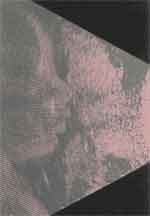Sounds of silence
 every expectant mother is given a mandatory ultrasound scan of her womb, the resulting image from which often looks more like a sandstorm than a growing baby. Although images obtained from magnetic resonance imaging (mri) and x-rays are much sharper, doctors still prefer good, old ultrasound to the these methods.
every expectant mother is given a mandatory ultrasound scan of her womb, the resulting image from which often looks more like a sandstorm than a growing baby. Although images obtained from magnetic resonance imaging (mri) and x-rays are much sharper, doctors still prefer good, old ultrasound to the these methods.
Ultrasound's popularity has several medical reasons. Obstetricians prefer ultrasound to mri because the latter can take only still pictures and cannot help track the foetus' movements and x-rays are usually avoided since these can harm the growing foetus. Besides being safe, ultrasound has an important non-medical reason for the obvious preference that it enjoys: it is inexpensive, at just a fraction of what conventional x-rays or mri scans cost.
Doctors and scientists have contin-uously been seeking newer applications for ultrasound in other areas of healthcare. It is already employed as an alternative to x-rays in liver and breast tumour detection and is currently being tested for detecting problems where other types of imaging usually fail. Thanks to an ingenious little "trick" with small gas bubbles, ultrasound is fast becoming more useful for delivering drug treatments to parti-cular parts of the body, which otherwise, are quite inaccessible. Recently, scientists have discovered that low-intensity ultrasound can heal tibia fractures, reducing recovery time, besides cutting costs signi-ficantly (Journal of the American Medical Associa-tion Vol 278, No 20).
In a study of tibia fracture treatment, James Heckman from the Uni-versity of Texas Health Science Centre in San Antonio, usa, reported that an early use of ultrasound to treat these fractures considerably reduces healing time. In those limb fractures that demand cast immobilisation, the average disability time was reduced miraculously from 176 days to only 96 days. Furthermore, cost reduction per patient amounted to an amazing us $15,000. This method was useful even where intramedullary rods were inserted during surgical procedures in bone repair. Heckman claims that in such cases, the average disability time for patients was reduced from 154 days to 122 days with the corresponding cost-reduction amounting to about us $13,000 per patient. For the estimated 70,000 patients in the us suffering from tibia and fibula fractures each year, this is good news indeed.
For those with a technical bent of mind, ultrasonic scanning works essentially by "listening" to the echoes that are generated when sound travels through one substance or a medium and hits an obstruction in its path. Scientists know that the medium that reflects sound best is air. They found that air bubbles, between a hundredth and a thousandth of a millimetre in diameter, can easily reflect ultrasound thousands of times more effectively that human flesh would. With their size, these bubbles can fit comfortably into even the tiniest of capillaries of the blood stream and can travel anywhere within the human body. Any organ that a doctor chooses can be made to light up with a combination of bubbles and ultrasound.
Therefore, these bubbles were used as ideal contrasting agents, showing up much more effectively than the blood vessels would, and have been used with absolute accuracy. A few contrasting agents combined with these microscopic bubbles have already gained wide acceptance in several medical applications. Detecting blockages in crucial arteries (such as those supplying blood to the heart muscle) has become much easier, thanks to the bubbles and, of course, ultrasound.
Using similar methods, scientists are now attempting to perfect a technique for diagnosing cancer. Malignant cancers usually develop their own recognisable network of blood vessels. Like in healthy tissues, blood vessels within malignant tumours have a complicated network with large vessels dividing into smaller ones. However, tumours deve-lop messier networks that are usually characterised by the clear preponderance of innumerable smaller capillaries. Researchers use ultrasound to take a series of cross-sectional pictures of a possible tumour. A computer then assembles these slices into a three-dimensional model, that can be viewed from any angle. This image helps researchers measure the blood vessels' size, understand their network and speculate whether the tumour under scrutiny will become malignant or not.
Scientists are also testing ultrasound in combination with the microbubbles in treating cancer. Cancers are treated with drugs that often have nasty side effects. If the new technique proves to be a success, these drugs can be dispensed precisely at the site within the human body where they are required. The idea is to load these bubbles with drugs and then deliberately burst them inside the cancerous tissues. These bubbles, loaded with the drug, are injected into an artery leading to the affected site. A beam of ultrasound would then be focused over the area, causing the bubble to explode, thereby releasing the drug.
Related Content
- Report on noise pollution, Delhi
- Delhi HC asks traffic police to file status report to remove pressure horns, modified silencers from vehicles
- Decibel count around Kolkata hospitals way above permissible limits
- Chilla Matt, students tell noise polluters
- Silence zones suffer high decibel noise pollution
- Reef fish tune in to noise when house hunting
